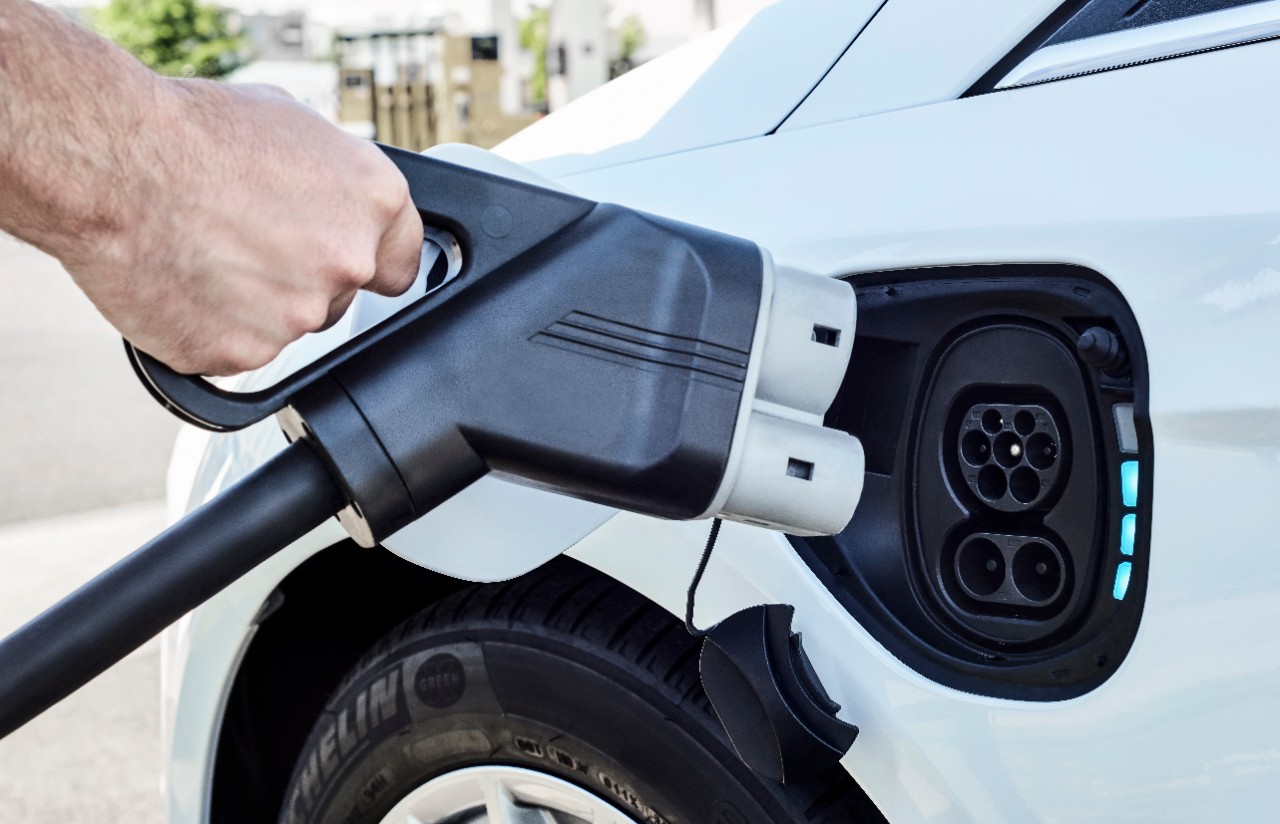Ford learns 'if you build workplace charging they will charge'
; Date: October 19, 2017
Tags: Ford Motors »»»» Electric Cars
After home charging, workplace charging is the most convenient place to charge an electric car. The 4 hours for a full recharge doesn't matter if you're inside the office working. Your personal involvement is the time to plug the car in, and the time to move the car when charging is complete. Having charging facilities at the workplace obviously will make folks more amenable to driving electric if only because the total driving radius is greatly expanded.
Ford Motors says they've learned, after installing 200+ charging stations at 50 facilities, that Ford's employees are more open to buying a plug-in electric car knowing they have charging available at the office.
This isn't exactly an earth shattering ground breaking research result. This result has been seen by others over the years, and it is an intuitively obvious result. It's nice to see the intuitively obvious verified by actual research results. And, it's nice to see that the results of this study will convince Ford to triple the number of workplace charging stations at Ford facilities. Maybe it will finally start sinking into the collective knowledge at Ford Motors that Electric is the direction we all need to take.
Last thing to note is that Ford's charging facilities expansion is meant to enable bad charging etiquette. The press release says the burden of moving ones car after it's fully charge is a major downside to electric car ownership. I can imagine certain office campus situations where that would be true. However, it means the folks who plug in to charge in the morning will be hogging the charging station all day. That a car is parked in front of a station tends to make it impossible for another car to use that station. Bottom line is that electric car charging facilities are a scarce resource that we must learn to share. This plan instead gives folks the idea they do not have to share charging facilities.

- Data on electric vehicle charging habits finds that despite continuing low gas prices, Ford employees are choosing to purchase or lease electric vehicles if workplace charging is widely available
- These results are prompting Ford to triple the number of U.S. workplace charging stations to 600 in the next two years; the network will double within a year
- More than six in 10 employees say Ford’s workplace charging, which currently includes 200 stations at 50 facilities, influenced their decision to purchase or lease an electric vehicle
DEARBORN, Mich., Oct. 19, 2017 – When it comes to workplace charging, Ford has found that if you build it, they will come, and they will charge.
They are U.S. and Canadian Ford employees, who say the company’s 200 current charging stations at 50 facilities have given them the confidence to buy or lease an electric vehicle without worrying where they can charge away from home. More than six in 10 employees who drive electric vehicles say Ford’s workplace charging network influenced their purchase or lease decision.
As a result, Ford is tripling the number of North American workplace charging stations to 600 in the next two years. Within a year, the network will double.
“Work is the second most likely place people charge their electric vehicles,” said Steve Henderson, Ford sustainability and vehicle environmental matters manager. “If we give people the ability to charge when they’re at work, we can significantly up the potential for mass market adoption of electrified vehicle technology.”
Henderson and his team conducted a study on employee charging and driving behaviors from January 2014 to September 2017, initially collecting data using the MyFord Mobile® smartphone app, Ford’s charging network and employee surveys. This week, in a presentation at the 30th International Electric Vehicle Symposium and Exhibition in Stuttgart, Germany, Henderson will deliver insights the data revealed, and stress the significance of a workplace charging network.
An important finding suggests that for some employees – particularly those stationed at one facility for an entire day – having to move their vehicles once they are fully charged constitutes a serious downside to driving electric. So Ford is expanding its network to accommodate existing demand and anticipated greater adoption of electrified vehicles.
New employee charging stations will aid an ongoing effort to understand where and when people charge their electric vehicles whether at work, home or while running errands.
Among other findings the study revealed:
- The most popular times to charge electrified vehicle batteries are from 8 a.m. to 11 a.m. and from noon to 3 p.m.
- Since September 2014, Ford employees have charged their vehicles at work more than 165,000 times (~$59,000 at 0.078 cents per kilowatt-hour), resulting in a reduction in carbon emissions produced by approximately 600,000 pounds
- Through early August of this year, Ford’s charging station network has provided approximately 2 million miles of pure electric driving for its employees
- DTE Energy’s solar array at Ford World Headquarters currently produces far more electricity than is consumed by the charging stations
About Ford Motor Company
Ford Motor Company is a global company based in Dearborn, Michigan. The company designs, manufactures, markets and services a full line of Ford cars, trucks, SUVs, electrified vehicles and Lincoln luxury vehicles, provides financial services through Ford Motor Credit Company and is pursuing leadership positions in electrification, autonomous vehicles and mobility solutions. Ford employs approximately 203,000 people worldwide. For more information regarding Ford, its products and Ford Motor Credit Company, please visit
www.corporate.ford.com.

